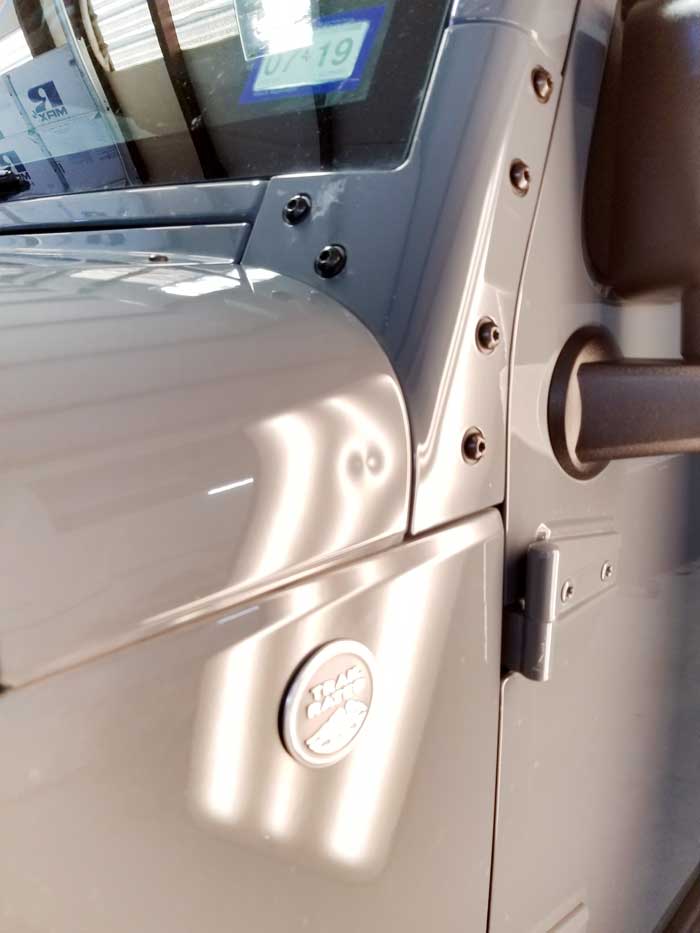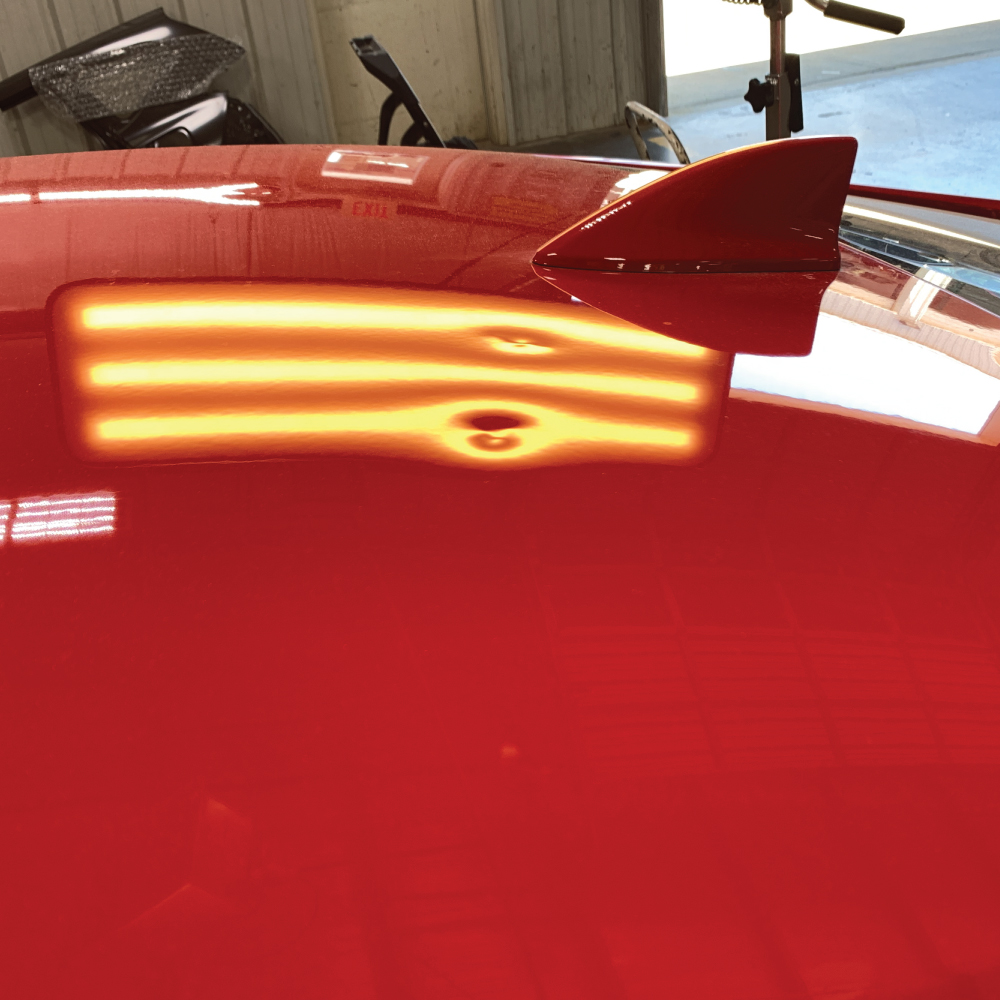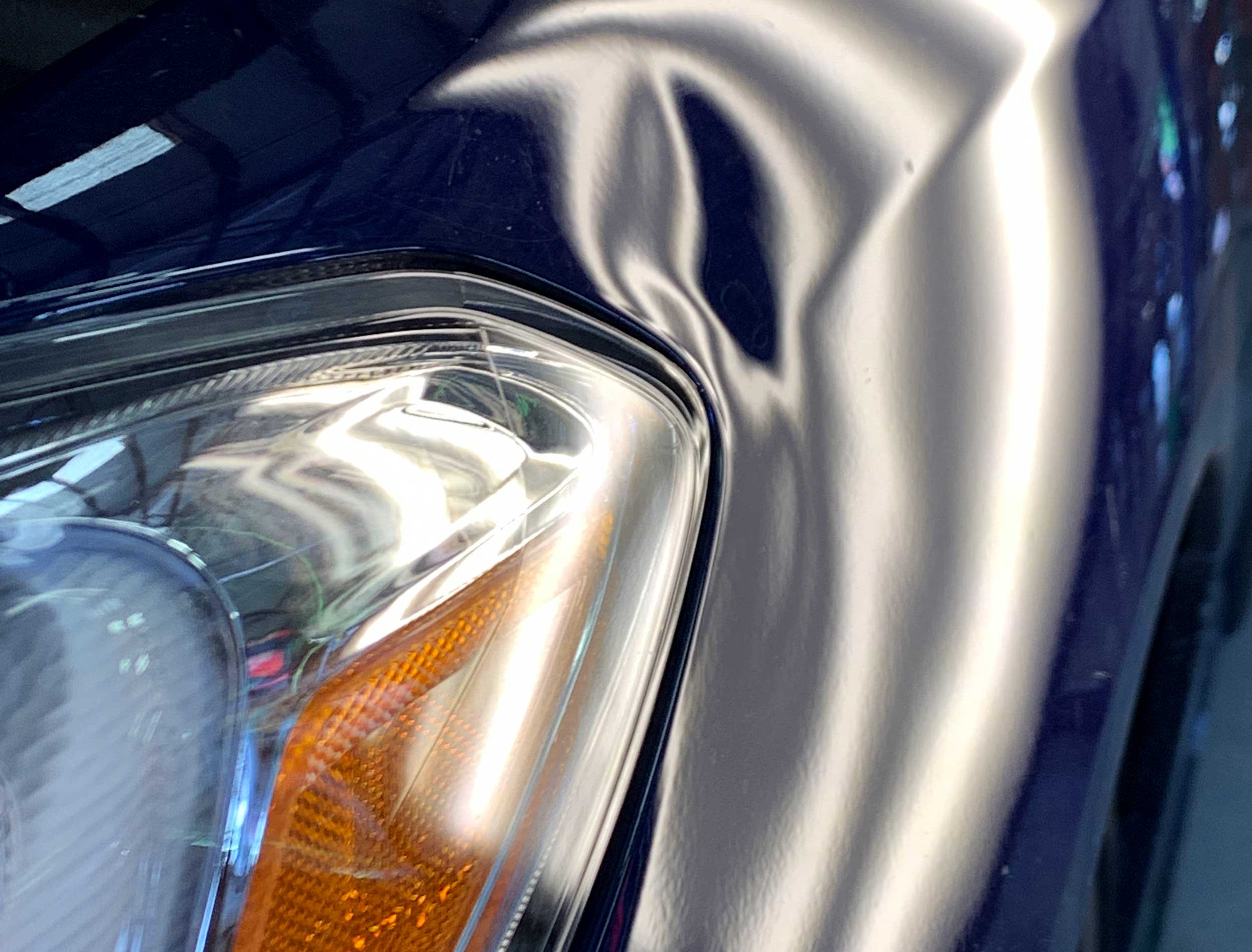- Mon - Fri: 8am - 5pm
- 980 E State Hwy 121 Business Building B Suite 3, Lewisville, TX 75057

Menu
Paintless Dent Repair Lewisville, TX
DFW's TRUSTED LEADER IN PDR & Hail Repair
Classy Auto has been offering our clients the best in paintless dent repair & auto hail removal services for over 20 years.
980 E State Hwy 121 Business Building B Suite 3, Lewisville, TX 75057
Our Paintless Dent Repair Services Include
Paintless Dent Repair
Classy Dent Repair in Lewisville is here for your car’s dents and door dings. With our Paintless Dent Repair, we maintain your car’s original finish. Drive in and let’s keep your ride looking sleek!
Auto Hail Damage Repair
Caught in a recent hail storm in Lewisville? No worries, at Classy Dent Repair we specialize in Auto Hail Damage Repair. Let us smooth things out for you. Stop by our shop today.
Dent Repair
Get rid of that frustrating dent! Classy Dent Repair in Lewisville provides top-notch dent and door ding repair services. Drive in today and let’s give your vehicle the care it deserves!
Hail Evaluations
When hail hits in Lewisville, TX, Classy Dent Repair is here to assist. Our expert hail evaluations help you understand the damage. Drive in today for an exact evaluation!
Lewisville Texas PDR
Paintless Dent Repair
Paintless Dent Repair (PDR) is an innovative procedure used to fix dents without damaging the original paintwork of the vehicle. Technicians manipulate precise locations of metal to its original position with specialized tools, eliminating the need for filling and repainting. PDR is eco-friendly and cost-effective. Benefits include maintaining your car’s original finish, thus preserving its resale value, and saving time, as PDR typically takes less time compared to traditional dent repair methods.


Lewisville Texas Auto Hail Repair
Auto Hail Damage Repair
Auto Hail Damage Repair is a specialized service to fix dents and damages on a vehicle caused by hail. Techniques such as Paintless Dent Repair (PDR) are often used, which preserve the original paintwork and maintain the car’s value. The process is cost-effective and less time-consuming compared to conventional body shop work. The benefits include not only restored aesthetics but also maintained structural integrity and resale value of the vehicle. Plus, many insurance companies cover hail damage repair, reducing out-of-pocket costs for vehicle owners.
Lewisville Texas Dent Repair
Dent Repair
Dent Repair is a service designed to fix any form of dents (minor dents) on a vehicle’s body without requiring a complete paint job. Using techniques like Paintless Dent Repair (PDR), professionals gently massage dents from the inside out, maintaining the original paintwork. It’s efficient, cost-effective, and environmentally friendly compared to traditional methods. The benefits are manifold: your car looks like new again, its structural integrity and resale value are maintained, and you save both time and money due to the quick, non-invasive process.


Lewisville Texas Hail Evaluations
Hail Evaluations
Hail Evaluations are thorough assessments conducted by experts to determine the extent of damage caused by hailstorms on vehicles. Skilled technicians carefully inspect the body, identifying dents, dings, and other hail-related issues. This evaluation helps provide an accurate estimate for repairs and guides the repair process. By getting a hail evaluation, you gain a clear understanding of the damage to your vehicle and the necessary steps for restoration. This knowledge allows you to make informed decisions regarding repairs, insurance claims, and ensures that all necessary repairs are addressed, ultimately saving you time, money, and ensuring the longevity of your vehicle.
Need a Dent Removed?
Contact us to schedule a paintless dent repair appointment.
We provide PDR and Hail Repair services in Dallas Fort Worth area
Classy Auto Testimonials
See What Our Clients Say
This is hands down one of the best hail companies in the business! My Career in PDR started with Mr. Ray West over a decade ago! The most high quality and professional guys I know!! Highly recommend!
Jesse Ferguson
I was amazed. After my first experience with hail damage I had no idea what to do. Luckily the team at Classy Auto was able to help me coordinate my insurance company, do countless amounts of paintless dent repair, and also coordinate the things they don’t specialize in such as replacement of my hood and repaint. With all the supply chain shortages I was shocked that their team was able to find parts and repair my vehicle in approximately a 3 week span. I didn’t have to worry about a thing because the quality of their work allowed me to trust them completely.
I’d recommend them to anyone and will 100% be a return customer should the need arise.
Brad Pinkston
If you are looking for quality paint less dent repair work, Ray West and his company are the best in the business, our collision center does not have an in-house paint less dent repair technician so when we need assistance we can count on Classy Auto Inc. They are always on time, they follow a seamless repair process for excellent results Time and time again. Highly recommend their services.
Alex Medina
Ray West, owner of Classy Auto, has over 20 years experience performing paintless dent repair, and like magic, he can quickly remove any trace of a dent and bring auto body panels back to factory new condition. I have seen others improve the appearance of dents with paintless dent repair, but in contrast, Ray has 100% removed dents from my vehicles. Ray is a paintless dent repair artist.
Neil McNabnay
Had a great experience working with Ray West of Classy Auto. Highly recommended for all your Hail and paintless dent repairs.
Carlos Rodriguez
They did a fantastic job on my son’s car within a few hours! I would highly recommend using this company if you have a dent that needs repair.
Laura Smith
Excellent service. Very timely and upfront about the job needed.
Such a pleasure to work with. Honest and made us feel very comfortable about the needed work on the truck.
Kyllene Weiss
Best quality of body work I have ever seen. I highly recommend!
Wafaa Salman
Great customer services Rey goes above and beyond to help his clients.
Johnnie Alvarado
Previous
Next
Auto Hail Repair & Paintless Dent Repair FAQs
What is the difference between traditional dent repair and paintless dent repair?
Traditional dent repair and paintless dent repair (PDR) are two distinct methods for addressing vehicle dent removal, whether caused by door dings, hail storms, or minor accidents. These techniques cater to vehicle owners in the Dallas-Fort Worth (DFW) metroplex and beyond, offering different advantages depending on the specific needs and preferences of the customer. Let’s delve into the key differences between these two approaches:
Process and Technique:
Traditional Dent Repair: This method typically involves an auto body shop, where highly knowledgeable professionals perform a detailed inspection of the damaged areas. They may need to use tools and paint to reshape and refinish the affected area. It can be a time-consuming process.
Paintless Dent Repair (PDR): PDR is the go-to option for minor dent repair. Skilled technicians use specialized tools to gently manipulate and massage the dent from the inside, preserving the original paint finish. This process is quicker, leaving no need for paint touch-ups.
Cost and Time:
Traditional Dent Repair: Often more expensive due to the materials and labor involved. It may require a rental car and take longer to complete.
Paintless Dent Repair (PDR): Typically more cost-effective since it requires fewer materials and labor hours. PDR can be performed quickly, often within hours, allowing for same-day service.
Convenience:
Traditional Dent Repair: May involve rental car arrangements, which can be an inconvenience for vehicle owners.
Paintless Dent Repair (PDR): Offers the convenience of valet service or mobile dent repair. Technicians can come to your location, making it easy for busy car owners.
Quality and Finish:
Traditional Dent Repair: When performed by professionals, it can deliver an excellent job with paint matching and refinishing. However, there’s always a slight risk of noticeable differences in color and texture.
Paintless Dent Repair (PDR): Yields top-notch service with minimal risk of noticeable repairs since it preserves the original paint. It often exceeds customer expectations in terms of the final appearance.
Insurance Claims:
Traditional Dent Repair: Typically involves insurance claims and paperwork. The facility may work with various insurance companies, such as State Farm, to get your repairs approved.
Paintless Dent Repair (PDR): PDR is often approved by insurance companies for hail damage repair, making the claims process smoother.
Customer Reviews:
Traditional Dent Repair: You can find reviews on platforms like Yelp and BBB for auto body shops. The quality and satisfaction vary from place to place.
Paintless Dent Repair (PDR): PDR specialists are known for their expertise in handling various dent types and sizes, with many customers leaving satisfied reviews, making referrals to friends and family.
In summary, the choice between traditional dent repair and paintless dent repair depends on the extent of damage, budget, convenience, and your preference for preserving the original paint finish. Both options have their merits, but paintless dent repair often stands out for minor dent repair, offering a hassle-free, cost-effective, and high-quality solution for vehicle owners in the DFW metroplex and beyond. So, don’t hesitate to schedule an appointment with a reputable PDR service like the one in Flower Mound, Arlington, Plano, Lewisville, or other locally owned and operated facilities in the area to get your dents repaired with the best customer service and lifetime warranties.
Can all hail damage be repaired using the paintless dent repair technique?
While paintless dent repair (PDR) is a highly effective technique for repairing many types of hail damage, it’s essential to understand that not all hail damage can be completely repaired using this method. The extent and severity of the damage, as well as the location of the dents, play a significant role in determining whether PDR is a suitable option. Here’s a closer look at the factors involved:
Size and Depth of Dents:
Minor Dents: PDR excels in repairing small to medium-sized dents where the paint is still intact. It’s particularly effective for shallow dents on flat or gently curved surfaces.
Larger and Deeper Dents: If the dents are too deep or extensive, especially on body lines or sharp curves, traditional dent repair methods may be required.
Paint Damage:
Intact Paint: PDR relies on preserving the original paint finish. If the paint is chipped or cracked in addition to the dent, PDR may not be suitable, and touch-up painting may be needed.
Paintless Repair: PDR is ideal when the paint is undamaged, ensuring a seamless repair without color or texture discrepancies.
Accessibility:
Accessibility to the Dent: PDR technicians need access to the backside of the dent to manipulate it successfully. Dents in areas that are difficult to reach may not be suitable for PDR.
Open Areas: Dents on open panels, like hoods or roofs, are more likely to be candidates for PDR.
Type and Number of Dents:
- Multiple Dents: PDR can address multiple dents, but the density and proximity of dents may affect the repairability. Technicians may need to assess the overall damage before proceeding.
Technician’s Skill and Experience:
- Highly Knowledgeable Professionals: A skilled PDR technician with years of experience can often work wonders with various types of dents. Their expertise can make a difference in the success of the repair.
Hail Damage Severity:
- Hail Storms: The severity of the hail storm itself can vary. While PDR is commonly used for hail damage repair, extremely severe storms with large hailstones may lead to more extensive damage that requires traditional repair methods.
Insurance Claims and Approval:
- Approved Claims: Insurance companies may approve PDR for certain hail damage claims, but it ultimately depends on the specifics of the policy and the extent of the damage.
How long does it typically take to repair hail damage using paintless dent repair?
The time it takes to repair hail damage using paintless dent repair (PDR) can vary based on several factors, including the extent of the damage, the number of dents, the skill of the technician, and the accessibility of the dents. However, PDR is known for its efficiency, and it often offers a quicker turnaround compared to traditional dent repair methods. Here’s a breakdown of what to expect:
Number and Size of Dents:
Minor Dents: For small, isolated dents, a skilled PDR technician can typically complete the repair in a matter of hours.
Multiple Dents: If there are numerous small dents or a few larger ones, it may take a bit longer, potentially a full day or more.
Accessibility to Dents:
Open Areas: Dents on open panels, such as the hood or roof, are generally more accessible and can be repaired more quickly.
Complex Areas: Dents in hard-to-reach or intricate areas may require additional time and effort.
Technician’s Experience:
- Highly Knowledgeable Professionals: Experienced PDR technicians can work efficiently and complete the job more quickly while maintaining quality.
Severity of Hail Damage:
Hail Storm Severity: The severity of the hail storm itself plays a role. Smaller hailstones typically result in minor dents that can be repaired more quickly.
Extensive Damage: If the hail storm produced large hailstones or caused extensive damage, the repair process may take longer, potentially several days.
Insurance Approval:
- Approved Claims: The speed of repair can be influenced by how quickly insurance claims are approved and processed. If claims are approved promptly, repairs can begin sooner.
Availability and Scheduling:
- Scheduling: Availability at the chosen repair facility can impact the timeline. It’s a good idea to schedule an appointment in advance.
Quality Assurance:
- Excellent Job: PDR technicians take pride in delivering an excellent job. They may spend additional time ensuring that the repaired areas meet high-quality standards.
Convenience Options:
- Convenience Services: Some PDR services offer valet service or mobile dent repair, which can save time by eliminating the need for you to travel to a shop.
In most cases, PDR offers a quicker turnaround compared to traditional dent repair, especially for minor hail damage. Many customers are impressed with the speed and quality of PDR, leaving satisfied reviews and referrals for friends and family. However, for more extensive hail damage or if multiple vehicles require repairs, it’s essential to discuss the estimated timeline with the PDR service provider in the DFW metroplex, whether in Flower Mound, Arlington, Plano, Lewisville, or other nearby towns. They can give you a better idea of how long your specific job will take and provide a free estimate to help you plan accordingly.
Does insurance typically cover paintless dent repair for hail damage?
Insurance coverage for paintless dent repair (PDR) for hail damage can vary depending on your insurance policy and the specific circumstances of the hail storm. Here are some key points to consider:
Policy Coverage:
Approved Claims: Many insurance policies cover hail damage repair, including PDR, if you have comprehensive coverage. Comprehensive coverage typically includes damage caused by hail storms, among other perils.
Check Your Policy: To determine if your insurance will cover PDR for hail damage, it’s essential to review your policy documents or contact your insurance company. They can provide specific details about your coverage.
Deductible:
- Deductible Requirement: Even if your policy covers hail damage repair, you may still have to pay a deductible before the insurance kicks in. The amount of the deductible can vary from policy to policy.
Insurance Company:
- Insurance Provider: Different insurance companies have different policies and guidelines regarding hail damage repair. It’s a good idea to talk to your insurance agent or claims representative to understand the process and coverage options.
Severity of Hail Damage:
- Extent of Damage: The severity of the hail damage and the cost of repairs can influence whether insurance will cover PDR. In many cases, if the cost of repairs exceeds your deductible, insurance will cover the remaining amount.
Repair Shop Choice:
- Approved Shops: Some insurance companies may have a list of approved repair shops where you can have the repairs done. These shops often work directly with the insurance company to streamline the claims process.
Additional Coverage:
- Rental Car Coverage: Depending on your policy, you may have rental car coverage that can help with the convenience of transportation while your vehicle is being repaired.
In general, paintless dent repair is a cost-effective and efficient method for repairing minor hail damage. It’s often the preferred choice for both insurance companies and vehicle owners because it preserves the vehicle’s original finish and can be completed quickly. However, the extent of your insurance coverage for hail damage repair, including PDR, depends on the terms of your policy.
To navigate the insurance claims process effectively and ensure you receive the coverage you’re entitled to, it’s advisable to work with professionals in the DFW metroplex, such as those in Flower Mound, Arlington, Plano, Lewisville, or other locally owned and operated facilities. They can provide a free estimate, assist with the claims process, and perform the necessary repairs with the best customer service and lifetime warranties, giving you peace of mind during the whole repair process.
Will my vehicle's value decrease if I use paintless dent repair for hail damage?
Using paintless dent repair (PDR) for hail damage repair is generally unlikely to decrease your vehicle’s value. In fact, PDR is often preferred by vehicle owners and can have several positive effects on your vehicle’s overall worth and appeal:
Preservation of Original Finish:
- PDR is designed to retain the vehicle’s original paint finish. This means that there won’t be any color discrepancies or issues with texture that can sometimes occur with traditional dent repair methods involving painting. As a result, your vehicle’s aesthetic appeal and value remain intact.
Maintaining Structural Integrity:
- PDR focuses on the removal of dents without affecting the structural integrity of the vehicle. Since no major components are replaced or altered, your vehicle’s safety and performance specifications are not compromised.
Cost-Effective Repairs:
- PDR is often more cost-effective than traditional dent repair. Lower repair costs can make your vehicle more attractive to potential buyers, as they won’t be burdened with the added expenses associated with extensive repair work.
Quick Turnaround:
- PDR is known for its speed and efficiency. Quick repairs mean less downtime for your vehicle, allowing you to maintain its value by keeping it on the road rather than in a repair shop.
Quality Assurance:
- Reputable PDR technicians take pride in delivering an excellent job. The restoration of your vehicle’s appearance to its pre-damage state can enhance its resale value and appeal.
Insurance Considerations:
- If you’re dealing with hail damage, using PDR is often an approved option by insurance companies. This can simplify the claims process and ensure that the repair work is done to industry standards.
It’s important to note that the impact on your vehicle’s value also depends on factors like the overall condition of the vehicle, its make and model, and the severity of the hail damage. While minor hail damage repaired using PDR should not significantly affect your vehicle’s value, more extensive damage may have a marginal impact, but the benefits of preserving the original finish and structural integrity often outweigh any slight reduction in value.
To get a better understanding of how PDR can benefit your vehicle’s specific situation and maintain its value, you can consult with professionals in the DFW metroplex, such as those in Flower Mound, Arlington, Plano, Lewisville, or other locally owned and operated facilities. They can provide a free estimate and valuable insights into the repair process, helping you make an informed decision that aligns with your vehicle’s long-term value and appearance.
Give us a call
(214) 315-4104
Send an email
classyauto@dr.com
Visit our office
980 E State Hwy 121 Business Building B Suite 3, Lewisville, TX 75057
Classy Auto, Inc.
Classy Auto has dedicated ourselves to becoming the premier leaders of Paintless Dent Repair (PDR) and auto hail repair in DFW by changing the way typical claims are handled.
Proudly serving Dallas / Fort Worth Auto Body Shops for over 20 years.

Call (214) 315-4104 to Schedule an Appointment
© 2023 All rights Reserved. Classy Auto | Powered by Casey’s SEO